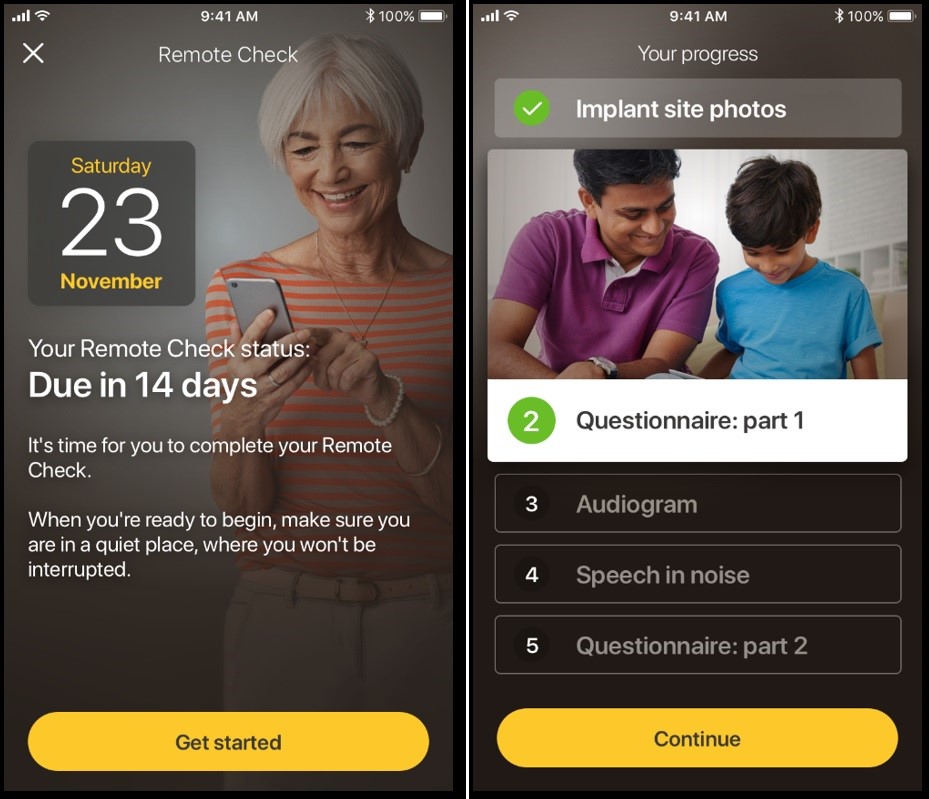Cochlear implant patients now have a way to improve their ability to hear without making a trip to the audiologist. Using a simple iPhone app, patients with the Cochlear Nucleus 7 Sound Processor can answer a few questions, take a photo of their implants, and share that information instantly with their audiologists who can then identify what is needed to improve the devices, and ultimately, patients’ hearing.

While this remote testing capability is currently limited to one type of cochlear implant, remote servicing will likely eventually become available for all cochlear implant brands Washington University offers, said Susan Rathgeb, clinical audiologist at Washington University School of Medicine.
Audiologists with the Department of Otolaryngology at the Washington University School of Medicine are among the first in the country to offer this Remote Check through a ‘controlled market release’ or CMR offered by Cochlear Limited.
By completing more than 2,000 cochlear implants for adults and children earlier this year, more than nearly every other health provider in the country, the Department of Otolaryngology has clearly emerged as a leader in cochlear implants, according to Lisa Potts, PhD, assistant professor. So far, 12 Washington University patients have used the Remote Check on their iPhone and nearly 100 additional patients who have both the implant and the iPhone could begin utilizing it shortly.

While approval was not expected for another year, the FDA fast-tracked the Cochlear Nucleus Smart app for iPhone along with other COVID-19 related approvals, according to Dr. Potts. The company rolled out the controlled market release and enrolled the first patient on April 21.
Positive reaction from patients
“I’ve received really positive feedback about it, especially for those patients where we have been able to pinpoint the issue and make a plan of what to do,” said Potts. “A remote check includes a picture and answering questions about how the implant feels. We can look and see if everything is stable – maybe an office visit is not needed. But if we complete the remote check, and it varies, we can recommend that you come to the office for a complete evaluation.”
Patients using the Cochlear Nucleus 7 Sound Processor can customize the implant’s sound using an iPhone or Apple device.
“Patients already have an app on their phone to adjust the volume, change programs,” added Rathgeb. “This new Remote Check allows the audiologist to get a status check on the implants, determine how the external equipment is working, and test their programming to see if they’re not hearing as well as they could before.”
Saving patients a trip
“For audiologists, instead of having to tell patients we have to check in person, the remote checks are a great option,” added Potts. “For patients with certain ongoing issues, we have a way to keep tabs on them. In the past, I have had patients with impedance fluctuation, and had them coming in once or twice a week for a 30 second measure. We need to know those things. With remote check, I’ve been able to keep tabs on them. If everything is stable, we save the patient from traveling back and forth, while saving us the time to see patients in the office.”
While the app is currently only available for Apple products, Cochlear is working to offer the advanced technology for Android users.
